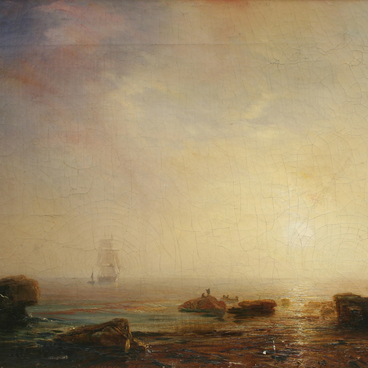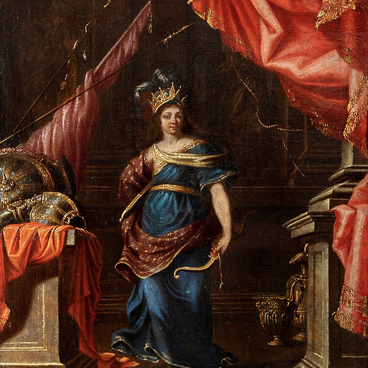In the 17th century, paintings depicting all kinds of everyday objects, set tables, flowers, and other similar scenes, were named descriptively — according to the main motif of the composition. Accordingly, in the Dutch inventory of the time, one can find, among others, names like “Pot with Flowers” and “Wreath of Flowers”, as well as “Kitchen”, “Breakfast with Fish”, “Fruit”, “Still Life with a Decanter”, “Smoking Accessories” or “Vanity of Vanities”.
In 17th-century Europe, there were two schools of still lifes: Flemish and Dutch. At first, the still lifes of Dutch and Flemish masters were similar, but by the end of the century, there was a difference. “Breakfasts” is the first original type of Dutch still life. The works of Dutch masters are more reserved, balanced in colors, with close attention to detail, to every single item.
An unknown artist of the 17th-century Dutch school painted the still life, which is now in the collection of the Primorye Art Gallery, in the genre of a “set table” or “breakfast”. This trend in the art of still life originated in the city of Haarlem. Local members of the shooting guilds would order group portraits for artists to perpetuate traditional banquets, during which they cheered older shooters to retirement. Gradually, the motif of the set table stood out in a separate genre. Such everyday still lifes were patriotic in nature, as they reminded of participants in the Dutch War of Independence.
In their paintings, Dutch artists depicted bread and pies, lemons and nuts, cheeses, hams and sausages, dishes with oysters, and fish. These still lifes can be interpreted depending on the set of items depicted.
In the “Still Life” on display in the Primorye Gallery, objects are softly illuminated by diffused light. On the table, there is a fruit basket, a tall German glass in the shape of a columbine cup (Akeleibecher) along with pieces of silver tableware that only rich citizens could afford. This makes it possible to attribute this “breakfast” to the type of “luxurious” still lifes. On the other hand, a pie and bread could be seen on the table of any Dutchman. A lemon with a cut peel twisted in a spiral adds a colorful spot to the canvas.
In 17th-century Europe, there were two schools of still lifes: Flemish and Dutch. At first, the still lifes of Dutch and Flemish masters were similar, but by the end of the century, there was a difference. “Breakfasts” is the first original type of Dutch still life. The works of Dutch masters are more reserved, balanced in colors, with close attention to detail, to every single item.
An unknown artist of the 17th-century Dutch school painted the still life, which is now in the collection of the Primorye Art Gallery, in the genre of a “set table” or “breakfast”. This trend in the art of still life originated in the city of Haarlem. Local members of the shooting guilds would order group portraits for artists to perpetuate traditional banquets, during which they cheered older shooters to retirement. Gradually, the motif of the set table stood out in a separate genre. Such everyday still lifes were patriotic in nature, as they reminded of participants in the Dutch War of Independence.
In their paintings, Dutch artists depicted bread and pies, lemons and nuts, cheeses, hams and sausages, dishes with oysters, and fish. These still lifes can be interpreted depending on the set of items depicted.
In the “Still Life” on display in the Primorye Gallery, objects are softly illuminated by diffused light. On the table, there is a fruit basket, a tall German glass in the shape of a columbine cup (Akeleibecher) along with pieces of silver tableware that only rich citizens could afford. This makes it possible to attribute this “breakfast” to the type of “luxurious” still lifes. On the other hand, a pie and bread could be seen on the table of any Dutchman. A lemon with a cut peel twisted in a spiral adds a colorful spot to the canvas.



